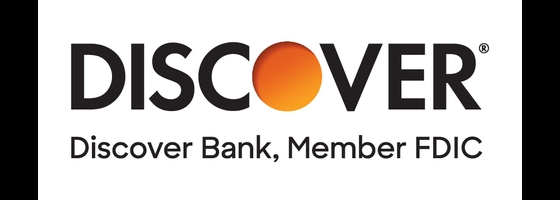- Shorter loan-term options allow you to pay off the debt quickly.
- Loans as low as $2,000 available.
- Fast funding available in as little as one business day.
Best Holiday Loans (& Alternatives)

Our evaluations and opinions are not influenced by our advertising relationships, but we may earn a commission from our partners’ links. This content is created by TIME Stamped, under TIME’s direction and produced in accordance with TIME’s editorial guidelines and overseen by TIME’s editorial staff. Learn more about it.
It’s the most wonderful time of the year—and for many, one of the most expensive. According to a November report from the National Retail Federation, Americans are expected to spend as much as $966.6 billion making merry this year. It’s no wonder some of us are considering holiday loans.
Holiday loans are really just personal loans dressed up in tinsel—and going into debt for the short-term excitement of an abundance of presents or a holiday party might not be the wisest financial choice. Even the grandest holiday bash won’t increase your net worth.
But for those determined to make the season bright at any cost, choosing the right holiday loan may help you save hundreds of dollars in potential interest charges.
| Title | Best for | Loan amount | APR | Min. credit score | Rating |
|---|---|---|---|---|---|
Avant | Shorter terms | $2,000 to $35,000 | 9.95% to 35.99% | 600 | 4 of 5 stars |
Best Egg | Quick funding | $2,000 to $50,000 | 6.99% to 35.99% | 640 | 4 of 5 stars |
Discover® Bank | Low fees | $2,500 to $40,000 | 7.99% to 24.99% | 660 | 4 of 5 stars |
LendingClub | Small loans | $1,000 to $40,000 | 6.34% to 35.89% | 600 | 3 of 5 stars |
Lending Point Personal Loans | Easy-to-use mobile app | $1,000 to $36,500 | 7.99% to 35.99% | 600 | 3.5 of 5 stars |
PenFed | Low interest rates | Up to $50,000 | 8.99% to 17.99% | 580 | 3.5 of 5 stars |
Upstart | Low credit score | $1,000 to $50,000 | 7.4% to 35.99% | 300 | 4.5 of 5 stars |
SoFi Personal Loans | Big loan amounts | $5,000 to $100,000 | 8.99% to 29.49% | N/A | 4 of 5 stars |
Here are our top picks for holiday loans, no matter your needs.
With one-year loan terms available, Avant makes it possible to get the cash you need for a holiday loan—and repay it fast. Loan amounts start at $2,000, and borrowers with credit scores of at least 600 have a decent chance of qualifying.
If you need holiday money fast, Best Egg may be a smart choice. Once your application is approved, you can receive funds in as little as 24 hours. However, an origination fee of 0.99% to 8.99% is included in your overall APR. (The fee will be at least 4.99% for loans with terms of four years or longer.)
Discover boasts “no origination fees, no closing costs, no fees at all,” provided you pay your bill on time each month. With competitive starting interest rates and five different term lengths to choose from, Discover allows you to customize your loan repayment.
With loans starting at just $1,000, LendingClub makes it possible to take out just what you need to cover your holiday spending. While loan terms are limited to three or five years, LendingClub does not charge prepayment penalties, giving you the option to pay off your loan early.
For savvy borrowers who want to manage their loan on the go, LendingPoint offers a highly rated mobile app for both Android and Apple devices. Users can check their rate and even apply from their smartphone, as well as track spending, income, debt, and credit scores once they’ve become LendingPoint customers.
While several lenders offer interest rates as low as 7.99%, most of them can go as high as 20% or 30%. PenFed offers lower overall rates. At the time of this writing, PenFed APRs ranged between 7.99% and 17.99%, with monthly payments as low as $50.
Founded in 2011, SoFi has grown steadily over the last decade, becoming a prominent name in the fintech space. While many personal lenders cap their funding amounts at $50,000 or less, SoFi offers personal loans as large as $100,000 for those who need a lot of cash up front. (Of course, only the most creditworthy borrowers are likely to qualify for these larger loans—and SoFi has a fairly strict minimum credit score requirement of 680 for all loan amounts.
If you struggle with poor credit, borrowing can be a challenge, but Upstart makes it possible. In business since 2012, Upstart’s minimum required credit score is just 300, though other factors are also considered. For example, you must have a minimum yearly income of $12,000 to qualify.
We reviewed 10 of the most popular personal loan lenders, comparing data points including eligibility criteria, interest rates, available loan terms and amounts, speed of funding, discount availability, customer service reputation, and more. We included 8 lenders that offer personal loans you can use at the holidays.
Please keep in mind that interest rates, terms, minimum eligibility requirements, and other specifics are subject to change at any time and that borrowers with higher credit scores and other markers of creditworthiness are more likely to qualify for lower interest rates. Not all borrowers will qualify for the rates listed.
There are several factors to consider when applying for a holiday loan. First, the best holiday loans aren’t always the ones with the lowest interest rates—or those marketed as holiday or special occasion loans. Rate is important, but other factors, such as loan term and origination fees, can also have an impact. And choose a lender that doesn’t charge an early repayment penalty. This way, you have the option to save even more money by paying off the loan early.
Always check to make sure that you meet the lender’s minimum income and credit score requirements before you apply, to improve your chances of qualifying. Finally, choose a lender with a solid customer service reputation. It can make a big difference if and when you need help down the road.
According to our research, the average personal loan rate hovers between 8.66% and 30.94%—rates we calculated by averaging the low and high end of the interest rates for the 10 lenders we analyzed.
Remember that the higher your credit score, the lower the interest rate you’re likely to qualify for.
These days, most personal loan applications, including holiday loans, can be completed online. With most lenders, you can prequalify by providing basic information including your name, address, and Social Security number—which the bank may use to perform a soft credit pull to estimate your interest rate. (Prequalifying doesn’t usually affect your credit score.)
To finish your application, you’ll need to provide the following documentation to confirm your identity, income, and other demographic information:
Nowadays, most of these documents can be uploaded to your lender online. Once your application is reviewed and approved, you’ll receive your funds—usually within five to seven business days, but with some lenders in as little as 24 hours.
While you may be tempted to take out a holiday loan, doing so can have serious financial ramifications over the long term—for a temporary payoff. Here are some holiday loan alternatives to consider before you submit your application.
Still have questions about holiday loans? We’ve got your back.
A holiday loan is just a personal loan used to cover holiday expenses. Like any other personal loan, it’s unsecured debt—meaning there’s no collateral that the bank can use to lower its risk. This is why personal loans have higher interest rates than a secured loan, like a second mortgage or new car loan.
As with any other personal loan, the balance is repaid in monthly or bi-weekly installments over a period of time, known as the loan term. Payments include both principal—the money you borrowed—as well as interest—the money the bank charges for the service of providing the loan.
Personal loans, including holiday loans, can be used for just about any purpose you can imagine. Besides party expenses and gifts, people will take out personal loans to cover unexpected medical expenses, vacations, and more. Check with your lender directly to ensure it doesn’t have any limitations or restrictions around how the money can be spent.
You can get holiday loans from a variety of different lending institutions—and these days, thanks to the advent of online banking, they’re easier to access than ever.
Most large banks offer personal loans, which you can use for holiday expenses. In fact, you may be eligible for favorable loan terms if you’re an existing bank customer.
Credit unions also offer personal loan products, including holiday loans. If you already have a checking or savings account with the credit union, you may qualify for rate discounts and other incentives.
As you can see from our list above, many online lenders offer personal loans that you can use to cover holiday expenses. While many online lenders are legitimate, given the prevalence of online scams, you should always research the company you’re dealing with before you borrow any money.
Taking out a holiday loan can have a negative impact on your financial situation—but if you follow the proper steps, it doesn’t have to be a detriment.
Holiday loans can help you pay for presents, parties, and more—but they’re still a form of debt, and higher-interest debt at that. While choosing the right lender can lower the long-term financial impact of a holiday loan, those hoping to end up on Santa’s “nice” list, financially speaking, might want to look for another option.
While any kind of loan can have a negative impact on a person’s financial health, borrowing money to cover a short-term expense, like a holiday party, may not be worth years of monthly payments.
Each lender has its own standards when it comes to qualifying borrowers for a holiday loan—or any kind of loan, for that matter. Some lenders have minimum credit score requirements as low as 300, while others set higher minimums, like 680. (In most cases, borrowers with higher credit scores qualify for lower interest rates.)
Like any other loan or line of credit, holiday loans are approved based on the applicant’s financial standing, including factors like credit score, current debt, income, cash flow, and more. Because holiday loans are considered unsecured debt, the bank doesn’t have collateral to fall back on—which means these loans can be slightly harder to get than a secured loan like an auto loan or mortgage.
To prequalify for a holiday loan, you’ll need to provide your basic demographic information to a lender. The prequalification process will estimate your interest rate and usually entails a soft credit pull, which shouldn’t impact your credit score. However, most lenders will require a hard credit pull before officially approving your application.
The information presented here is created by TIME Stamped and overseen by TIME editorial staff. To learn more, see our About Us page.











